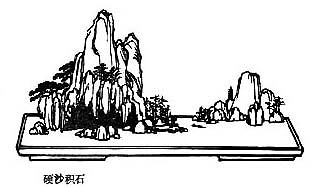Sun Zi 
 – The Art of War
– The Art of War
Chinese strategy explained : know yourself and the ennemy, use deception, spies, and "win with ease". Tr. Giles (en, annotated) and Amiot (fr).
Attack By Stratagem
Sunzi III. 12.
1) By commanding the army to advance or to retreat, being ignorant of the fact that it cannot obey. This is called hobbling the army.1
Giles III.13.
I. Imposer des ordres pris en Cour selon le bon plaisir du prince. Rendre les officiers perplexes en dépêchant des émissaires ignorant les affaires militaires.
Amiot

The Art of War – Sun Zi III. 12. – Chinese off/on – Français/English
Alias Sun Tzu, Sun Wu, Sun Tse, Sunzi Bingfa, Souen Tseu, Souen Wou, 孫武.
The Book of Odes, The Analects, Great Learning, Doctrine of the Mean, Three-characters book, The Book of Changes, The Way and its Power, 300 Tang Poems, The Art of War, Thirty-Six Strategies
Welcome, help, notes, introduction, table.
Index – Contact – Top
